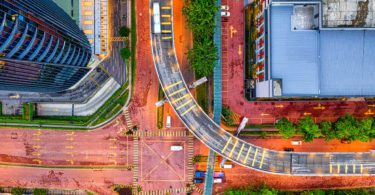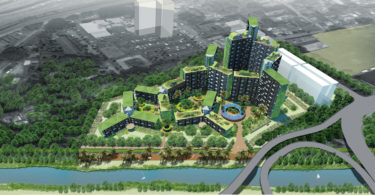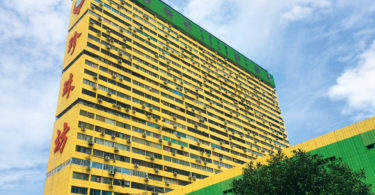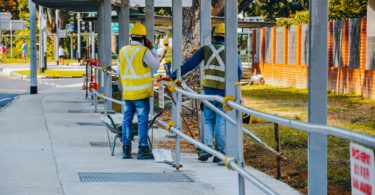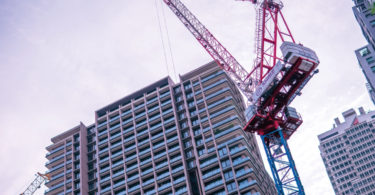We often hear claims that certain buildings are low-energy buildings. But do you realise that such claims do not always reflect an accurate picture of the actual energy consumed?
For example, let’s say Building A achieved energy efficiency at its operation stage. But what about the large quantities of materials with high-embodied energy (energy expended during manufacturing, transportation and on-site assembly or installation)—such as glass, PVC, mild steel, aluminium, etc.—used in constructing the building?
Or Building B, which was designed with the latest technologies to achieve the highest Green rating. However, most of its occupants drive long hours to and from the building every day because of the absence of, or reluctance to take, public transportation (i.e. the building contributes to urban sprawl).
Is Building A really energy efficient? Can Building B be considered as a true Green building?
Having a building with reduced operational energy, such as Building A, is obviously a good thing. What is not so obvious is that Green buildings should have low total life-cycle energy demand. This includes:
• the embodied energy involved in the acquisition, processing, manufacturing and transportation of building materials during the construction phase;
• the operation energy of the building; and
• the demolition energy in the destruction,removal and recycling of building materials.
This means a Green building should have low energy demand and environmental impact throughout its life cycle—from the time the raw materials are extracted and manufactured into building materials until it is finally demolished at the end of its useful life. All these stages must reduce demand from nature (energy, water, materials and land) and reduce output/loadings to nature (in terms of waste and pollution).
Studies by Associate Professor Robert H. Crawford from the University of Melbourne, who used a comprehensive life-cycle inventory assessment technique, found that energy embodied in the construction of buildings can be equivalent to the energy required for their operation over their life.
The Green status of Building B, or its actual reduction of negative environmental impacts, can be seen as questionable because the additional energy used from employees driving to work may well exceed the energy savings realised by the building. This additional energy used is called Transportation Energy Intensity (TEI).
For an average office building in the United States, calculations done by Environmental Building News show that commuting by office workers accounts for 30 per cent more energy than the building itself uses. For an average new office building built code and standard, transportation accounts for more than twice as much energy used as building operations. Shocking, isn’t it?
ACCURATE SNAPSHOT
What I’m trying to say is that Green building rating systems should always reflect the accurate picture of a building’s actual energy consumption and support the true principles of sustainability and energy efficiency.
Almost all existing rating systems in Malaysia take into consideration the energy or environmental impacts during the construction and operational stages of a building’s life cycle. However, they still have limited ability to assess such impacts during other life-cycle stages, such as raw material extraction and processing; material manufacturing and transportation; and demolition at the end of the building’s useful life.
For example, operational energy is well covered in many local rating systems, but embodied energy remains excluded. By the same token, the energy consumed by building occupants while occupying the building is emphasised, but the energy consumed to travel to and from the building is ignored.
It is worth noting that until our local rating systems are ready to assess developments based on the complete building life cycle, by offering credits or points for reduced operational and embodied energy, there will be no means for us to know which buildings in our country actually have low total life-cycle energy demand. The best practical examples that we can learn from are probably Green buildings that are certified with the highest ratings, using the US LEED, Australia’s Green Star and the UK’s BREEAM rating systems.
Sadly, it is the same case for buildings with low TEI. Green buildings with most occupants taking public transport, riding bicycles and driving low-emitting vehicles are still not recognised and rewarded because TEI is not assessed in any building rating systems.
I strongly believe that the points addressing transportation in rating systems should be changed from a prescriptive basis (provide bicycle racks and changing rooms, limit parking, provide parking for carpool/vanpool and low-emitting vehicles, etc.) to a performance basis (calculated TEI). To do this, research is needed to develop building-specific metrics for measuring the TEI of new and existing buildings. The development of such performance-based metrics would require a team of the leading experts in transportation and land-use planning to be assembled.
TRUE GREEN
In summary, I assert that during operation stage, a building can only be regarded as a true Green building if it is occupied by Green occupants. Green occupants do not only have environmental knowledge and awareness but also demonstrate positive attitudes and practices towards the environment.
Moreover, a true Green building is one that has low total life-cycle energy demand and reduces negative environmental impacts from conception to demolition. Whether architects use low-cost technologies or high-tech ones, the principle remains the same, that is, to create structures and use processes that are environmentally responsible and resource-efficient throughout a building’s life cycle.
Green architecture produces environmental, social and economic benefits. Environmentally, Green architecture helps reduce pollution, conserve natural resources and prevent environmental degradation. Economically, it reduces the amount of money that the building’s operators spend on water and energy and improves the productivity of those using the facility. And socially, Green buildings are meant to be healthier, safer and more secure for the people.
 DR ZALINA SHARI
DR ZALINA SHARI
Dr Zalina is a senior lecturer at the Faculty of Design and Architecture, Universiti Putra Malaysia (UPM). She received her PhD in Architecture (specialising in building sustainability assessment) in 2011 from the University of Adelaide, South Australia. With this expertise, she has been teaching sustainability-related courses for the Master of Architecture programme in UPM.
Zalina also shares her knowledge and expertise on sustainability issues and different Green building rating tools with government and non-government agencies and at educational events and programmes. She is currently a member of editorial boards for several international journals, as well as author and national correspondent for FuturArc magazine. She has been serving as a board member of the Malaysia Green Building Confederation since 2014, and currently chairs the Research Committee.

 Hong Kong
Hong Kong Singapore
Singapore Indonesia
Indonesia Tiếng Việt
Tiếng Việt ประเทศไทย
ประเทศไทย





